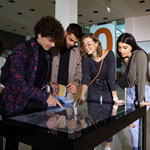
CULTURAL HERITAGE
Culture heritage becomes an experience
Solutions to attract visitors, entertain them and inform them through digital engagement.
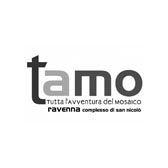
RAVENNA. Visit “Tamo, an exciting journey into the mosaic art" is for the first time an exciting experience.
The completely renewed permanent exhibition sponsored by the foundation RavennAntica within the complex of San Nicolò, shows several key features: the works displayed, interactive technology, lights installation and many other detail in the environment - that reminds a cosmopolitan dimension, as we are used to experience in large capitals.
"Tamo - Stressed the President of RavennAntica, Elsa Signorino - represent a very significant innovation where San Nicolò has a completely new appearance. This is just the first half of the entire project, which next year will also include the restoration of the cloisters. "
Tamo can be seen as an immersive and emotional journey in the mosaic, divided into six thematic routes where the majestic antiquity of relics, perfectly blends with the hyper-technological apparatus - touch screen, projections, computer stations - that enhances the finds.
The first section, "Pavimenta", offers an educational exhibition, designed and developed by the Scuola bottega del mosaico di Ravenna (School of the mosaic workshop in Ravenna).Copies of important antique floors, will show the different types of mosaics used to produce them.
The second section, "Ecclesia, Palatium" shows instead a portion of its opus sectile of the apse room and some mosaics in the south porch, with representations of the circus from the Palace of Ravenna. This palace was the first imperial residence of Honorius, then of Theodoric and finally the Exarchs. The mosaic floor comes from the second chapel of the church of San Severo, Classe.
"This exhibition is aimed to stimulate questions rather than providing answers - explains the curator Carlo Bertelli -.
Tamo museum is not conceived to be self-sufficient. It's a guide to the miracle of the mosaics in Ravenna and as an invitation to consider the mosaic in its extraordinary hold upon conscience. "
The Domus section, "Palatium", features mosaic floors from the ancient city of Faventia (Faenza), the domus Augustus in "Via Pasolini" and from the rich residence of the fifth century in "Via Dogana". The mosaic of the vestibulum represent the presentation of arms to Achilles, and panels with representations of soldiers.
Also shown here are the mosaics from the site of the Domus of Tappeti di Pietra di Ravenna (Stone Carpets of Ravenna), with an unusual mosaic made following an unusual geometric pattern found in a palatial building of the fifth century.
The fourth section, "Aurum", is located in the chancel and apse of the church of San Nicolò and contains materials for the mosaic made by the historic Venetian workshop of Angelo Orsoni and the contemporary work "Excursus on the flatening of golden tiles " of Paolo Racagni from Ravena.
Guests must carefully visit "Eternity and history", which explains everythign about the plaster casts, very important tools for understanding the art of mosaics. For centuries artists in Rome have made mosaics and for centuries man has tried to preserve them. Documents of restorations dated back to the first two decades of the nineteenth century have been found.
The restoration workshop of the Vatican Museum loaned casts made in 1934 of the mosaics of Santa Maria Maggiore and San Venanzio, in Rome. This is the only way to see all the details of this astonishing mosaics. And is just around the corner!
The sixth and final section, "Panorama", located in the loft, let visitors travel through the adventure of the mosaic of the Mediterranean by using the large touch screen table or viewing images projected on the wide screen. Special mention goes to the large overall impact of the installation designed by architect Paul Bolzani.
An article from the newspaper “Corriere di Romagna”
Touchwindow® was in charge of the technical installations of the Museum such as touchscreen, architectural projections, several LED monitors, the wide touch-less table . Interactive technologies and multimedia software specifically designed for the Musem Tamo in collaboration with Panebarco & C. can create a dynamic space that is evolving and changing to the outside, merging recreational and educational experiences. The space of the "museum" is not just an exhibition but a cultural environment accessible to the community where technology is preliminary to the visit. This creates different insights and educational suggestions for the educational school system (but not only), using an unique, playful and didactic approach.
Tamoinvolves and excite just by explaining history. Visitors are enriched with a unique experience where technology is the tool that accompanies their tour, harmonizing the exhibition context, as a virtual assistant that provides visitors with new knowledge.

Solutions to attract visitors, entertain them and inform them through digital engagement.
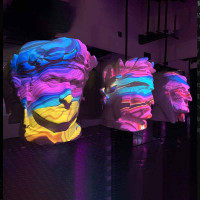
Ravenna’s Dante Museum becomes a place of time into time, where the modern interactive and multimedia aspects combine with prestigious historical artefacts of inestimable value.
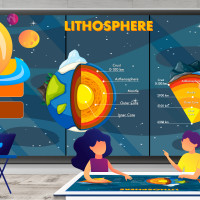
Discover our interactive and immersive solutions for the “Piano Scuola 4.0”, an important opportunity to make schools a participatory environment with engaging teaching methods and more learning opportunities for students.
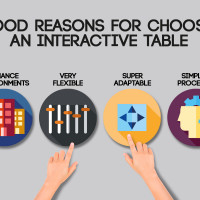
Touch screens are invading offices, restaurants, stations, shops. What advantages do they offer? and why integrate them into pieces of furniture like tables?